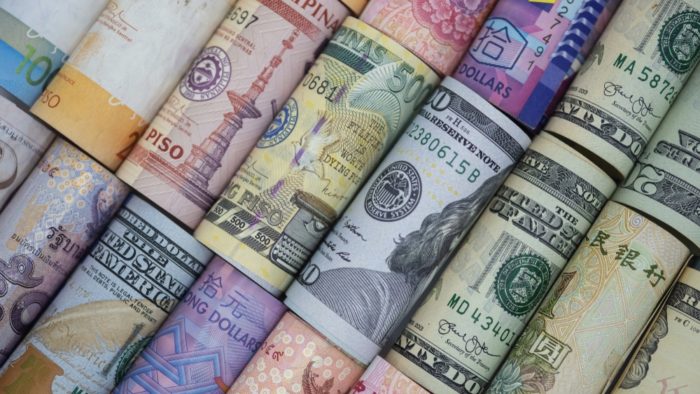CURRENCY MARKET

The dollar index inched up to a near one-week high of 93.5 on Tuesday, with market participants continuing to digest a more hawkish Fed. Last week, the US central bank signaled it could start reducing asset purchases as soon as November while lowering growth forecasts and rising inflation projections. Traders now keep a close eye on Fed Chair testimony on coronavirus support before the US Senate and Powell's participation in an ECB Forum panel. Fresh economic data due this week including the ISM Manufacturing PMI and PCE inflation should provide an update on the American economy.
The euro traded little changed at $1.17 at the end of September, not far from a recent one-month low of $1.168, as investors digested the narrow victory of the Social Democrats in German elections. The SDP won its first national election since 2005, beating Angela Merkel’s CDU by a slim margin of 1.6 percentage points. Olaf Scholz is now expected to start the process to form a coalition government, which will likely involve the smaller Greens and liberal Free Democrats. Elsewhere, ECB President Christine Lagarde said that inflation could exceed the central bank's projections but there are limited signs of this risk so far, suggesting policymakers will not be looking to tighten policy anytime soon as the baseline scenario continues to foresee inflation remaining below the 2% target over the medium term.
The British pound hovered around $1.37 on Monday, moving away from a 1-month low of 1.361 hit last week following the Bank of England's hawkish tone on monetary policy. The central bank lifted its forecast for inflation and two of its policymakers called for an immediate halt to the £895 billion bond purchase programme, bringing forward expectations for an interest hike. Meanwhile, concerns over the British economy and the unemployment outlook capped the gains, as a furlough scheme introduced to mitigate the effects of the pandemic ends this month.
The Australian dollar depreciated towards $0.72 in late September, the lowest since August 23rd, amid mounting concerns about a slowing global growth and as iron ore, the country's single biggest export earner, tumbled. Early in the month, Reserve Bank of Australia Governor Philip Lowe played down expectations of higher interest rates before 2024, even as he predicted a strong rebound for the economy next year. Lowe also said the RBA would keep tapering its bond-buying over time and would likely stop altogether sometime next year in line with several other central banks.
The New Zealand dollar traded around $0.70 in late September, the weakest since the end of August, as commodity-sensitive currencies have been hit as Beijing stepped up measures to cut steel production on environmental concerns. On the monetary policy front, the Reserve Bank of New Zealand is expected to tighten policy in October due to stronger than expected GDP data and decreasing COVID-19 infection numbers in Auckland.
The Japanese yen extended losses to trade above 111 per USD on Tuesday, its weakest level since July 1st and close to pre-pandemic lows. The yen lost some appeal as US 10-year bond yields touched a 3-month high on growing expectations of a US Fed tapering announcement. The PBOC calmed market fears of a liquidity crisis in the Chinese financial system by injecting several hundred billion yuan throughout the last week. On Wednesday, members of the ruling Liberal Democratic Party will vote for either Taro Kono or Fumio Kishida to become the party’s President and, subsequently, the country’s Prime Minister.
India’s rupee depreciated to 73.8 against the US dollar in late September, after touching 72.85 in August, which was its strongest level since mid-June. Investors turned to the greenback after the Fed signalled tapering could soon begin and conclude in the middle of next year. Meanwhile, both OECD and ASEAN Development Bank lowered India's growth forecasts for this year.
China's yuan hovered around 6.46 against the US dollar at the end of September, trying to recover from a recent one-month low of 6.484, as fears of widespread contagion from China Evergrande Group's debt troubles receded and as signs of improvement in Sino-US relations supported sentiment. Huawei Technologies Co's Chief Financial Officer Meng Wanzhou reached on Friday an agreement with US prosecutors to end the bank fraud case against her. Investors now hope that the latest positive development, along with the USTR's trade policy review, could lead to measures including trade tariff reductions. Elsewhere, US Federal Reserve Chair Jerome Powell signaled last week the US central bank could begin tapering its asset purchase program in November.
The Mexican peso traded around 20.1 against the greenback in late September, close to its weakest level since August 30 as traders digested weak economic data.The country’s economic activity expanded by 7.1% YoY in July, pointing to the slowest rise since March and missing analyst expectations of an 8.5% jump. Earlier this month, Mexico’s retail sales edged 0.4% lower in July over June, more than expectations of a 0.2% decline.


